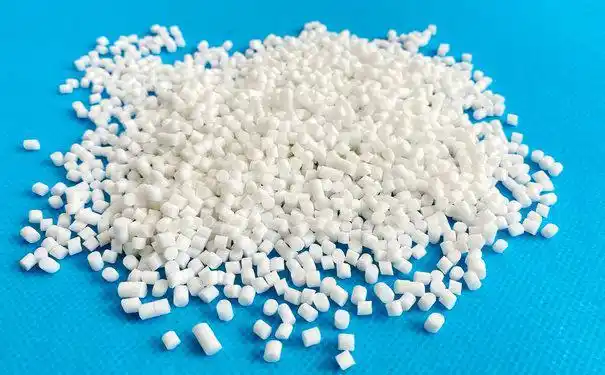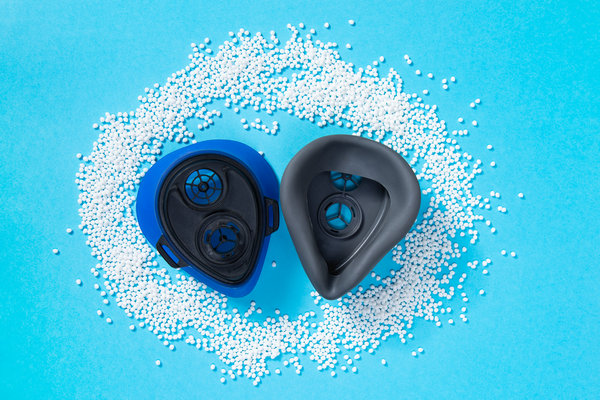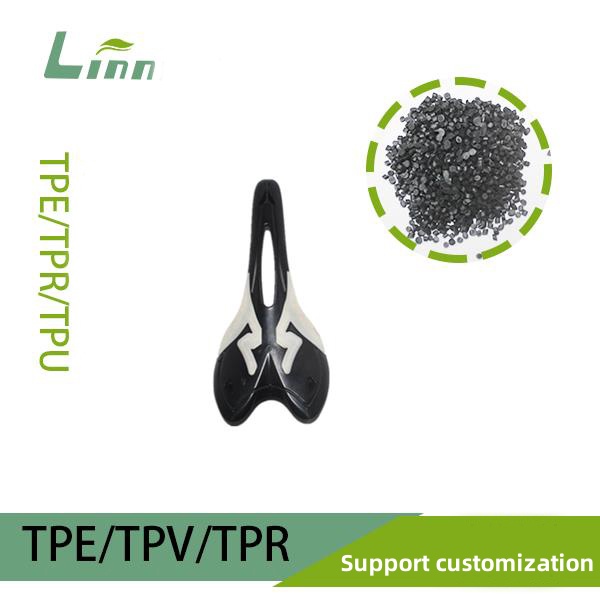In the world of adult toys, TPE (Thermoplastic Elastomer) has emerged as a popular material due to its unique combination of flexibility, softness, and affordability. However, one question that often arises among consumers and enthusiasts alike is: Will TPE toys become increasingly hard over time? As someone who has been deeply involved in this industry for years, I’ve encountered this query countless times. In this article, I’ll delve into the factors that influence the hardness of TPE toys, explore the science behind material degradation, and provide practical advice on how to maintain the optimal texture of your TPE companions.

Understanding TPE: A Brief Overview
Before we dive into the specifics, let’s take a moment to understand what TPE is and why it’s so widely used in the adult toy industry. TPE is a class of copolymers or a physical mix of polymers (usually a plastic and a rubber) that exhibit both thermoplastic and elastomeric properties. This means that TPE can be molded and shaped like a plastic when heated, yet it retains the flexibility and elasticity of rubber at room temperature.
Key Characteristics of TPE:
Softness and Flexibility: TPE toys are known for their lifelike feel, closely mimicking the texture of human skin.
Hypoallergenic: Many TPE formulations are hypoallergenic, making them suitable for individuals with sensitive skin.
Durability: While not as indestructible as some other materials, TPE toys can withstand regular use with proper care.
Cost-Effectiveness: Compared to silicone, another popular material in the industry, TPE is generally more affordable.
The Myth of Increasing Hardness: Debunked
Now, let’s address the elephant in the room: the belief that TPE toys will inevitably become harder over time. This is not entirely accurate. While it’s true that TPE, like any material, can undergo changes due to various factors, the notion of a steady increase in hardness is a misconception. The hardness of TPE toys is primarily determined by their initial formulation and can be influenced by external conditions, but it doesn’t follow a linear, irreversible path towards rigidity.

Factors Influencing TPE Hardness:
To better understand how TPE toys maintain or alter their texture, let’s examine the key factors at play:
Material Composition: The specific blend of polymers used in TPE toys can significantly impact their initial hardness and long-term stability. Manufacturers carefully select and combine different polymers to achieve the desired balance of softness, flexibility, and durability.
Temperature Exposure: TPE is sensitive to temperature changes. Prolonged exposure to high temperatures can cause the material to soften or even deform, while extremely cold temperatures might make it feel temporarily stiffer. However, these changes are usually reversible once the toy is returned to a moderate environment.
Chemical Interaction: Contact with certain chemicals, such as oils, lubricants, or cleaning agents, can affect the surface texture of TPE toys. Some substances may cause the material to swell, become sticky, or lose its elasticity over time.
UV Radiation: Prolonged exposure to sunlight or artificial UV light can degrade TPE, leading to discoloration, brittleness, and a potential change in hardness.
Mechanical Stress: Regular use, especially if accompanied by excessive bending, stretching, or compression, can cause micro-damage to the TPE structure, potentially altering its texture over time.
Maintaining the Optimal Texture of TPE Toys
Given these factors, it’s clear that the hardness of TPE toys is not set in stone. With proper care and maintenance, you can help preserve their original texture and extend their lifespan. Here are some practical tips:
Storage Conditions:
Temperature Control: Store your TPE toys in a cool, dry place away from direct sunlight and heat sources. Avoid leaving them in cars or other enclosed spaces where temperatures can soar.
Avoid Extreme Cold: While TPE can tolerate moderate cold, extremely low temperatures might make it feel stiff. If your toy has been exposed to cold, allow it to warm up to room temperature before use.
Cleaning and Maintenance:
Gentle Cleaning: Use mild soap and warm water to clean your TPE toys after each use. Avoid harsh chemicals or abrasive cleaners that can damage the surface.
Dry Thoroughly: After cleaning, pat your toy dry with a soft towel or let it air dry completely before storing. Moisture can promote the growth of bacteria and mold, which can degrade the material over time.
Lubricant Selection: Choose water-based lubricants for use with TPE toys, as silicone-based or oil-based lubricants can interact with the material and cause damage.

Handling and Usage:
Avoid Excessive Force: While TPE is flexible, it’s not indestructible. Avoid bending, stretching, or compressing your toy beyond its natural limits to prevent micro-damage.
Rotate Usage: If you have multiple TPE toys, consider rotating their use to give each one time to “rest” and recover its shape between sessions.
The Science Behind TPE Degradation: A Closer Look
To truly understand why TPE toys don’t inevitably become harder over time, it’s helpful to delve a bit deeper into the science of material degradation. TPE, like all polymers, is subject to a process known as “aging,” which encompasses a range of physical and chemical changes that occur over time. However, aging doesn’t necessarily equate to increased hardness.
Types of Aging in TPE:
Physical Aging: This refers to changes in the physical structure of the polymer chains, such as chain scission (breaking of the polymer chains) or cross-linking (formation of new bonds between chains). Physical aging can lead to changes in hardness, but these changes are often influenced by external factors like temperature and stress.
Chemical Aging: Chemical aging involves reactions between the polymer and its environment, such as oxidation, hydrolysis, or interaction with chemicals. These reactions can alter the chemical composition of the TPE, potentially affecting its hardness, but again, the outcome depends on the specific conditions and the material’s formulation.
Reversibility of Aging Effects:
One crucial aspect to note is that many aging effects in TPE are reversible or can be mitigated through proper care. For example, if a TPE toy becomes temporarily stiffer due to cold temperatures, it will typically regain its original softness once warmed up. Similarly, if the surface becomes slightly rough due to chemical interaction, gentle cleaning and conditioning can often restore its smooth texture.

Comparing TPE to Other Materials: A Hardness Perspective
To put TPE’s hardness characteristics into context, let’s compare it to two other popular materials used in adult toys: silicone and jelly rubber.
Hardness Comparison Table:
| Material | Initial Hardness (Shore A Scale) | Long-Term Stability | Susceptibility to Aging |
|---|---|---|---|
| TPE | 20-80 (varies by formulation) | Moderate to High (with proper care) | Moderate (influenced by external factors) |
| Silicone | 10-90 (varies by type) | Very High | Low (resistant to most aging effects) |
| Jelly Rubber | 10-40 (usually soft) | Low | High (prone to degradation and hardening) |
TPE: As shown in the table, TPE’s initial hardness can vary widely depending on the formulation. With proper care, it can maintain its texture for a considerable period, though it’s more susceptible to aging effects than silicone.
Silicone: Silicone is renowned for its durability and resistance to aging. It maintains its hardness and texture exceptionally well over time, making it a premium choice for long-lasting toys.
Jelly Rubber: Jelly rubber, while initially soft and pliable, is notorious for its tendency to degrade quickly. It often becomes sticky, brittle, or hard over time, especially when exposed to heat, light, or chemicals.
Addressing Common Concerns: TPE Hardness Myths Busted
In my years in the industry, I’ve encountered several persistent myths about TPE hardness. Let’s take a moment to debunk some of these misconceptions:
Myth: All TPE toys will eventually turn rock-hard.
Reality: This is far from the truth. While TPE can undergo changes in texture due to various factors, it doesn’t inherently become rock-hard over time. With proper care, many TPE toys retain their softness and flexibility for years.
Myth: TPE toys that feel slightly stiffer are defective.
Reality: A slight variation in texture doesn’t necessarily indicate a defect. As mentioned earlier, temperature fluctuations or brief exposure to cold can cause temporary stiffness, which resolves once the toy is returned to a moderate environment.
Myth: Only high-end, expensive TPE toys maintain their texture.
Reality: While it’s true that higher-quality TPE formulations may offer better long-term stability, the key to maintaining texture lies more in proper care and usage than in the price tag. Even budget-friendly TPE toys can last a long time if treated correctly.

Real-World Examples: TPE Toy Longevity in Action
To illustrate the points made above, let’s look at a couple of real-world examples of TPE toys that have stood the test of time:
Case Study 1: The Flexible Companion
A customer purchased a TPE dildo with a moderate Shore A hardness of around 50. Over the course of two years, she used it regularly, storing it in a cool, dark drawer when not in use. She cleaned it gently with mild soap and water after each session and avoided using harsh lubricants. To this day, the toy maintains its original softness and flexibility, showing no signs of significant hardening or degradation.
Case Study 2: The Neglected Toy
In contrast, another customer bought a similar TPE dildo but neglected proper care. He left it exposed to sunlight on his bedside table, used silicone-based lubricants, and rarely cleaned it. Within a few months, the toy became discolored, sticky, and noticeably harder. The lack of care and exposure to damaging conditions led to rapid degradation.
These examples highlight the importance of proper storage, cleaning, and usage in maintaining the texture and longevity of TPE toys.
Future Trends: Innovations in TPE Technology
As the adult toy industry continues to evolve, so does the technology behind TPE materials. Manufacturers are constantly researching and developing new formulations to enhance the durability, safety, and sensory experience of TPE toys. Some of the exciting trends on the horizon include:
Improved Aging Resistance: New TPE blends are being engineered to resist aging effects more effectively, ensuring longer-lasting softness and flexibility.
Enhanced Hypoallergenic Properties: Researchers are working on TPE formulations that are even more gentle on the skin, reducing the risk of allergic reactions or irritation.
Eco-Friendly Options: With sustainability becoming a growing concern, there’s a push towards developing biodegradable or recyclable TPE materials that minimize environmental impact.
These innovations promise to make TPE toys even more appealing to consumers, offering better performance and peace of mind.

Conclusion: Embracing the Versatility of TPE Toys
In conclusion, the question of whether TPE toys will become increasingly hard over time is not a straightforward one. While TPE, like any material, can undergo changes due to various factors, it doesn’t inherently follow a path towards rigidity. With proper care, storage, and usage, many TPE toys can maintain their original softness and flexibility for years, providing endless pleasure and companionship.
As someone who has witnessed the evolution of TPE technology firsthand, I’m excited about the future of this versatile material. Whether you’re a seasoned enthusiast or a curious newcomer, TPE toys offer a unique combination of affordability, realism, and customization that’s hard to beat. By understanding the factors that influence their hardness and taking steps to preserve their texture, you can enjoy the best that TPE has to offer for a long time to come.
Related Q&A
Q: Can I use baby oil as a lubricant with my TPE toy?
A: It’s not recommended. Baby oil is an oil-based product that can interact with TPE, potentially causing damage or altering its texture over time. Stick to water-based lubricants for the best results.
Q: How often should I clean my TPE toy?
A: Ideally, you should clean your TPE toy after each use to prevent the buildup of bacteria or other contaminants. A gentle wash with mild soap and warm water is usually sufficient.
Q: Can I put my TPE toy in the dishwasher for cleaning?
A: No, dishwashers are not suitable for cleaning TPE toys. The high temperatures and harsh detergents can damage the material. Stick to hand washing with mild soap and water.
Q: My TPE toy has a slight odor. Is this normal?
A: Some TPE toys may have a slight odor when new, which is usually due to the manufacturing process or packaging. This odor should dissipate over time with proper ventilation and cleaning. If the odor persists or is strong, it may indicate a problem with the material, and you should contact the manufacturer.
Q: Can I repair a tear or hole in my TPE toy?
A: Repairing TPE toys can be challenging, as the material doesn’t bond well with adhesives or patches. In most cases, it’s best to replace a damaged toy rather than attempting to repair it, as repairs may not be durable or safe.





